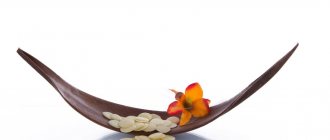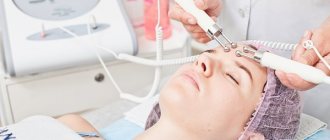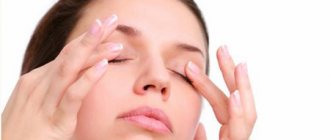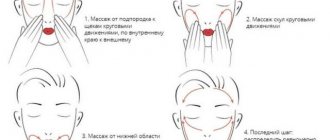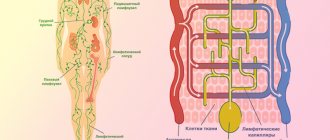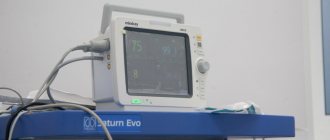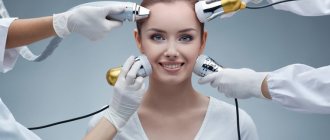The lymphatic system consists of:
- Pathways of lymph transport: vessels, capillaries.
- Lymphoid organs: lymph nodes, tonsils, Peyer's patches, spleen, thymus.
From a modern point of view, the main functions of the lymphatic system are:
- Transport. Returns amino acids, proteins, fats, fat-soluble vitamins, lymphocytes to the bloodstream.
- Protective. In the organs of lymphoid tissue, cells of the immune system come into contact with various antigens, and in these structures the lymph is cleansed of cellular detritus and other useless components.
When the physiological transport of lymph is disrupted, lymphedema actually occurs.
What is lymphostasis
First, it’s worth understanding what lymphostasis is, why it occurs, and what threats it can have to health.
Lymphostasis occurs very often after removal of the mammary glands, since such an operation affects the axillary lymph nodes. Usually the lymph nodes are removed, but the vascular network, although partially damaged, remains. Because of this, the supply of lymph does not stop, but its progress slows down significantly. Stagnation occurs, which leads to severe inflammation of soft tissues and the development of lymphostasis.
Photo: Yandex.Pictures
Simultaneously with the formation of edema, an increase in subcutaneous fat occurs. Hardening of blood vessels gradually develops, and tissue circulation deteriorates.
According to statistics, lymphostasis occurs in almost 25% of women who have undergone a mastectomy. The disease is often accompanied by impaired renal function, damage to the lymph nodes and bacterial infection. It is very important to begin treatment of the pathology in a timely manner, since swelling can progress and subsequently lead to dysfunction of the limbs. Without treatment, the disease can provoke erysipelas, hyperkeratosis, proliferation of connective tissue and other trophic changes in the skin. The most dangerous consequence of lymphostasis is disability.
It is for the treatment and prevention of lymph flow disorders that all patients after mastectomy are prescribed lymphatic drainage massage of the arm. If the operation was performed on two mammary glands, then the procedure is performed on both arms at once.
According to the etiological factor, lymphedema is divided into primary and secondary:
- Primary lymphedema is associated with congenital, genetically determined, underdevelopment of the lymphatic system. Based on the time of manifestation, the following forms of lymphostasis are distinguished: Milroy's, Meidge's and Tarda's disease.
- Secondary lymphedema is a pathology caused by damage to normally developed lymphatic vessels. In the equatorial countries of Asia and Africa, the dominant cause of secondary lymphostasis is filariasis. In developed European countries, oncological pathology plays a leading role in the development of the disease. Moreover, impaired lymphatic drainage is caused both by the progress of the tumor process itself and by its treatment (radiation therapy, lymph node dissection). In modern practice, leading European lymphologists note an increase in the incidence of secondary lymphedema associated with morbid obesity. Lymphedema can also be caused by: severe chronic venous insufficiency, lipedema, severe mechanical and surgical injuries.
Indications and contraindications
Lymphatic drainage is indicated for those people who suffer from excess weight, varicose veins, edema, cellulite and other skin defects. Massage also helps with vascular spasm, muscle soreness and high blood pressure.
And if you do lymphatic drainage on your face, you can achieve the following results:
- disappearance of bruises under the eyes;
- increasing skin elasticity up to the removal of fine wrinkles;
- disappearance of facial puffiness, tightening of its contour;
- less noticeable nasolabial folds and facial wrinkles;
- changing dry and oily skin to normal, thanks to the normalization of water-salt balance in cells.
However, there are also contraindications to this kind of massage. Lymphatic drainage cannot be done if:
- rosacea and blood diseases;
- tendency to thrombosis and diseases of the cardiovascular system;
- tumors (benign and malignant);
- trigeminal neuralgia;
- inflammation and enlargement of lymph nodes;
- pregnancy and lactation;
- liver and kidney ailments;
- skin diseases;
- open wounds, scratches, fresh stitches, cuts, etc. in the area where the massage is planned.
The most important component of complex anti-edematous therapy is lymphatic drainage massage.
Lymphatic drainage massage is a specific massage technique used to combat lymphedema by stimulating the functioning of lymphatic vessels. Manual lymphatic drainage massage is a gentle rhythmic effect on the lymphatic ducts, stimulating the outflow of lymph and its return to the circulatory system. According to European government standards, a good session involves drainage of the neck, torso and limb (in that order), lasting approximately 40-60 minutes. The effect of lymphatic drainage massage is supported by compression therapy. For this purpose, at the first stage of anti-edematous therapy, a compression bandage is used, due to the rapid dynamics of edema and, consequently, volume. At the second stage, special innovative compression knitwear is used. In the treatment of lymphedema, only the method of complex anti-edematous therapy meets state European standards. In the hands of the best specialists, a good treatment effect is achieved even in advanced cases, including severe manifestations of stage III lymphedema. Hardware lymphatic drainage is also used in the treatment of lymphostasis. This innovative technique is practiced by a number of leading European lymphologists and they present quite good results. Nevertheless, today there is no consensus among the best modern lymphologists regarding the effectiveness of hardware lymphatic drainage. Despite a number of obvious advantages, this technology should be used in combination with manual lymphatic drainage.
Work on the radical treatment of lymphedema has been going on for decades, and today some success has been achieved in this direction. But leading European lymphologists treat surgical treatment of lymphostasis with a significant degree of skepticism and prefer conservative methods. None of the modern operations on the lymphatic system are used in isolation from complex anti-edematous therapy.
In our country, unlike European practice, there is practically no state system of care for patients with lymphedema. Nevertheless, leading Russian lymphologist specialists achieve very good results in the treatment of lymphedema, which are not inferior to those in the best clinics in the world.
An important factor in proper treatment is diagnosis. A significant number of patients have swelling of the lower extremities. Lymphedema is often combined with venous edema. At the European Phlebological Center in Moscow, an experienced specialist skilled in modern innovative diagnostics will easily determine the state of the patient’s lymphatic and venous system. In the vast majority of cases, a thorough physical examination and a good duplex angioscanning will be sufficient for an accurate diagnosis of lymphostasis. In the most difficult cases, CT and MRI lymphography are used. Some European clinics successfully use the bioelectrical impedance analysis technique. It is based on measuring the amount of fluid in tissues.
The Moscow Innovative Phlebological Center uses the best technologies for diagnosing and treating lymphovenous insufficiency, which are not inferior to leading European clinics.
Recommendations before lymphatic drainage
Lymphatic drainage massage provides different techniques for each part of the body. However, there are general recommendations that must be followed for safety reasons.
A massage should always begin with soft, gentle strokes, and with each subsequent session the intensity of the effect should be gradually increased.
The skin must be steamed before the procedure. This can be done with hot, damp towels and a compress.
Movements during a massage should not be kneading in nature. And pain is completely unacceptable.
Oils, creams and other products are necessary in the process of lymphatic drainage. And the full course should be at least 10 sessions, only every other day.
Execution technique
The basis of any lymphatic drainage technique is to run your fingers through the vessels with lymph towards the lymph node. This is necessary because lymph usually accumulates from the bottom up. However, there are areas of the body where this happens differently. And the location of lymph vessels in each area is different. That is why different techniques are also selected for different parts of the body.
Lymphatic drainage facial massage
The duration of the session is no more than a quarter of an hour. Strong pressure and sudden movements are excluded, because otherwise the capillaries can be damaged. Facial massage consists of several stages.
First the forehead is massaged. Using both hands, place the fingertips in the center of the forehead and move towards the temples with stroking movements.
For the area around the eyes, the tips of your index fingers should be placed on the bridge of the nose and, with light pressure, move to the temples at the bottom of the eye socket. And when the eye socket is massaged from above, the movements are spiral, their direction is above the eyelids to the bridge of the nose.
When moving to the cheeks, use your fingertips to draw a line from the chin to the end of the lower jaw. The next line is from the corners of the mouth to the ears. The last one is from the upper lip to the temples.
The massage ends with the chin. Use the tips of your thumbs to gently press on the line from the chin to the ears.
Lymphatic drainage massage of the abdomen
Strong pressure is avoided in this area, as this can damage internal organs. The massage is done with the tips of the hoop, softly and easily.
It begins by rubbing the skin in the navel area. After which they begin to increase coverage, moving in a spiral in a clockwise direction. All movements are of the rubbing type.
Finish the lymphatic drainage session with light, soft tapping movements over the entire abdominal area.
If the stomach is a problem area, you can use anti-cellulite cream during lymphatic drainage.
Lymphatic drainage foot massage
When massaging your legs, you must remember that movements are performed only along the course of the lymph - from the knee from bottom to top. The inner thighs and groin should not be touched. Up to 6 movements are made on one leg, then the transition is made to the other leg.
Before the session, it is necessary to remove the load from the muscles. To do this, it is recommended to sit on a sofa or chair, and place the leg on which the massage will be performed on a chair.
The intensity should be increased gradually. At first the movements should be soft and careful. Then the pressure becomes stronger and stronger. However, under no circumstances should it cause pain.
To massage your legs below the knees, you should grab the back of the ankle just above the heel and move smoothly to the knee.
Doctors recommend lymphatic drainage massage for those people over 25 years of age.
The effect of such a massage is undeniable: a person looks younger, his immunity increases, weight decreases, and swelling goes away. However, if you need to massage the area of the back, chest or shoulders, you will have to ask for help, because lymphatic drainage in these places cannot be done on your own.
How many sessions do you need?
After the first session, which lasts approximately 30-40 minutes, you will feel better: the heaviness in your legs and muscle pain goes away, and a feeling of lightness appears. Restorative and metabolic processes will start in the body, and this effect will last for more than one day. However, to eliminate problems and improve the condition, you need to undergo at least 5-8 sessions. In some cases, this number is extended to 10-15 (it all depends on the state of health at the time of starting therapy).
At the end of the course, patients experience weight loss and improvement in general condition, the number of visible veins and vessels decreases, and swelling disappears. It is recommended to repeat the course once every six months. To consolidate the results, you need to combine lymphatic drainage massage with exercise and proper nutrition.
Cost of lymphomassage at the Idealista clinic
The cost of the procedures is indicated in the price list, which is located in the “Prices” section. To get acquainted, just select the category of services you are interested in. If the required procedure is not on the list, you can check with the operator for more information.
Prices:
The price of lymphatic drainage massage starts from 700 rubles. The cost of the service depends on the technique (classical lymphatic drainage, pressotherapy, LPJ), the area of influence, and the availability of additional services. For a one-time purchase of a course of procedures, we offer pleasant discounts.
Price list

